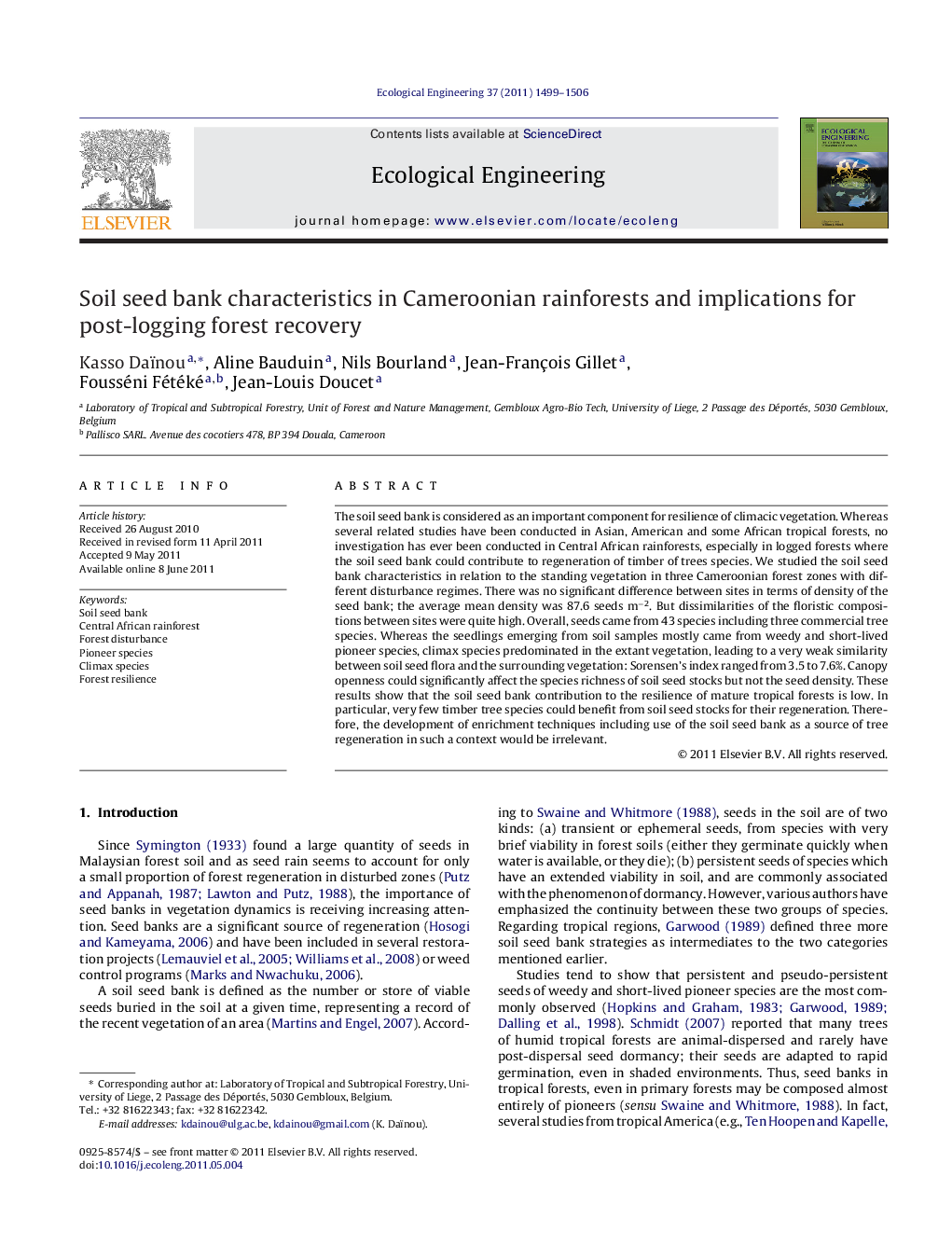| Article ID | Journal | Published Year | Pages | File Type |
|---|---|---|---|---|
| 4390271 | Ecological Engineering | 2011 | 8 Pages |
The soil seed bank is considered as an important component for resilience of climacic vegetation. Whereas several related studies have been conducted in Asian, American and some African tropical forests, no investigation has ever been conducted in Central African rainforests, especially in logged forests where the soil seed bank could contribute to regeneration of timber of trees species. We studied the soil seed bank characteristics in relation to the standing vegetation in three Cameroonian forest zones with different disturbance regimes. There was no significant difference between sites in terms of density of the seed bank; the average mean density was 87.6 seeds m−2. But dissimilarities of the floristic compositions between sites were quite high. Overall, seeds came from 43 species including three commercial tree species. Whereas the seedlings emerging from soil samples mostly came from weedy and short-lived pioneer species, climax species predominated in the extant vegetation, leading to a very weak similarity between soil seed flora and the surrounding vegetation: Sorensen's index ranged from 3.5 to 7.6%. Canopy openness could significantly affect the species richness of soil seed stocks but not the seed density. These results show that the soil seed bank contribution to the resilience of mature tropical forests is low. In particular, very few timber tree species could benefit from soil seed stocks for their regeneration. Therefore, the development of enrichment techniques including use of the soil seed bank as a source of tree regeneration in such a context would be irrelevant.
